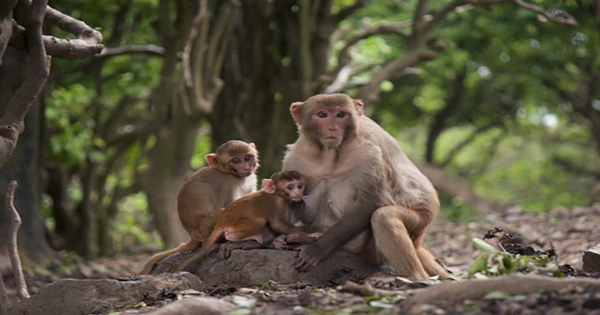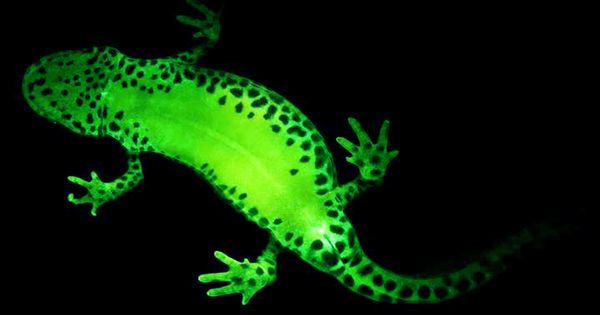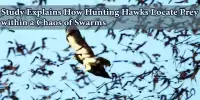How many monkeys are required to determine whether rhesus macaques comprehend medians? In a recent study, researchers from the University of Padua in Italy found that only two, “Arrow” and “Tolman,” were capable of advanced quantitative processing when staring at rows of dots. The study, which was published in the journal Biology Letters, set out to see how far rhesus macaques (Macaca mulatta) could push their arithmetic abilities in order to see if they could identify the numerical center in a sequence. To put it another way, could you tell where the middle duck sits in a row of five ducks? (The one with two ducks either side, FYI).
To do so, they outfitted Arrow and Tolman with touch-sensitive computer monitors that rewarded them with food pellets if they answered correctly. They were shown a succession of similar dots ranging from three to nine, and the food incentive was only available if they chose the middle option. The researchers shifted the dots around with each test to make sure they weren’t just becoming used to hitting the same spot on the screen. They also changed the dots’ dispersion such that the numerical and spatial middles were not the same, making it impossible to determine right responses without counting.
Arrow and Tolman demonstrated their ability to establish the numerical midpoint on a short dot stretch, but accuracy began to deteriorate as the sequences grew longer. When it came to the numerical-spatial intermediate sequence problems, however, they both chose the former over the latter. The study authors concluded, “The current study provides solid evidence that confirms our prior result that monkeys can locate the midpoint in sequences of discrete items and expands the findings in two crucial ways.” “First, we show that monkeys transfer a middle rule learnt with a small collection of discrete items to a larger set.” Second, we show that monkeys abstracted only numerical information despite having acquired the middle rule with sequences containing both spatial and numerical cues.”
The findings support recent research involving five-day-old chicks, which indicated that in a container-pecking task, they rely on numerical rather than geographical information. The experiments, taken together, shed light on animal behavior by demonstrating that numerical information is vital to many species and is taken into consideration automatically even when other cues are available. While the study is intriguing, it does have some limitations, such as the fact that it only looked at two people, limiting its generalizability to the entire rhesus macaque community. It does, however, add to a growing body of evidence proving that math isn’t merely something people developed to punish children. What are the chances? We may bring you news of slug Sudoku next week.
















